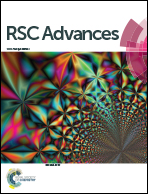Temporal changes in horsebean bioavailability and accumulation after removing extractable oxytetracycline fractions in soils
Abstract
Extractable fractions of oxytetracycline in soil affect its bioavailability and accumulation in plants. The objective was to assess the bioavailability of different bound fractions of oxytetracycline available in soil to horsebean. After freshly spiking with oxytetracycline for 24 h, soils were treated with water and mild (0.1 mol L−1 CaCl2) and exhaustive (0.1 mol L−1 Na2EDTA-McIlvaine) extractants as treatments T1, T2, and T3, respectively, to obtain different extractable oxytetracycline fractions. The control was a nonextracted soil. Horsebean was exposed to the abovementioned soils. The results showed that oxytetracycline was accumulated in shoots and roots at 10 days; however, after 10 days, the amount of oxytetracycline in the roots was below its quantification limits (<0.001 mg kg−1). The remained OTC as resistant bound fraction in T3 always exhibited the highest shoot concentration factors (SCF) compared with removing fewer extractable fractions during 14–28 days exposure. Moreover, the effect of horsebean upon oxytetracycline extractability during exposure was also studied. Adding horsebean did not affect the change trend of three extractable fractions in the control, T2, or T3 during exposure, but changed the trend of CaCl2- and total-extractable fractions in T1. Horsebean activity can increase total-extractable concentration in the control, but decrease total-extractable concentration in T1, T2 and T3. The correlation analysis showed that there were close relationships between water-, CaCl2-, total-extractable fractions in soil and root accumulation for the horsebean at 10 days of exposure. The interesting phenomenon was that resistant bound OTC had a high availability, and its ecological risk in soil had been underestimated in previous investigations.


 Please wait while we load your content...
Please wait while we load your content...